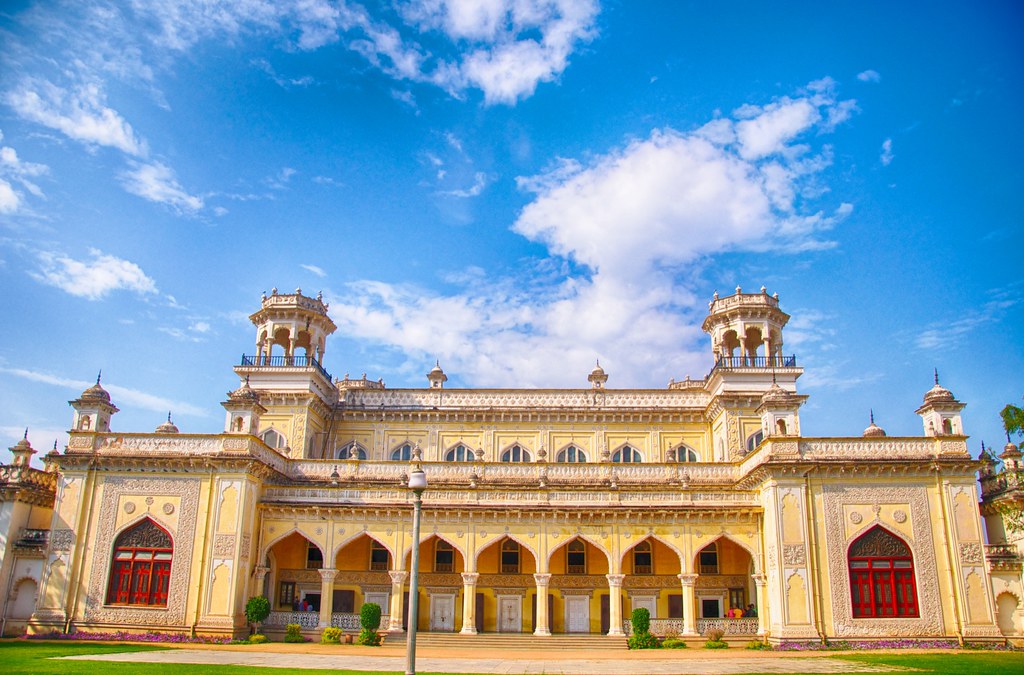
The Math of Majesty: Chowmahalla Palace’s 100-Year-Old Artifacts and More
Chowmahalla Palace, a symbol of grandeur and history, stands proudly in Hyderabad, India. This breathtaking palace once served as the seat of the Nizams, who ruled the region for centuries. Today, it remains a stunning example of architectural brilliance, blending Persian, Rajasthani, Indo-Saracenic, and European styles. From its intricate design to its priceless 100-year-old artifacts, Chowmahalla Palace is a treasure trove of history and culture.
A Glimpse into History
Built in the 18th century, “Chowmahalla Palace” was the official residence of the Nizams of Hyderabad. The name “Chowmahalla” translates to “Four Palaces,” referring to the four magnificent palaces within its vast complex. Commissioned by Salabat Jung in 1750 and completed in the late 19th century, this palace witnessed the rise and fall of a dynasty. It also hosted royal ceremonies, including the grand coronation of the last Nizam, Mir Osman Ali Khan, in 1911.
The palace was designed to reflect the Nizams’ wealth and influence. It once stretched over 45 acres, though today only 12 acres remain open to visitors. Despite this, the preserved sections offer a glimpse into the splendor of Hyderabad’s royal past.
Architectural Splendor
The architecture of Chowmahalla Palace is a harmonious blend of multiple styles. Each section of the palace tells a unique story through its design, intricate carvings, and lavish interiors.
Khilwat Mubarak – The Grand Durbar Hall
At the heart of the palace lies Khilwat Mubarak, the grand durbar hall. This hall, adorned with Belgian crystal chandeliers, was where the Nizams held important ceremonies. The high ceiling, marble flooring, and delicate stucco work make it one of the most captivating parts of the palace. Standing inside, one can almost hear the echoes of history—royal proclamations, political discussions, and celebrations that once filled this hall.
The Four Palaces
The complex consists of four palaces: Afzal Mahal, Mahtab Mahal, Tahniyat Mahal, and Aftab Mahal. Each has its own architectural beauty and purpose. These palaces showcase impressive stucco work, grand arches, and elegant courtyards. Walking through these halls, visitors can sense the opulence that once defined the Nizams’ lifestyle.
Mughal Gardens and Fountains
Outside, the palace grounds feature beautifully landscaped “Mughal-style gardens and fountains”. These add to the serene and royal ambiance. The well-maintained pathways, with lush greenery surrounding them, provide the perfect setting for visitors to appreciate the palace’s beauty.
The 100-Year-Old Artifacts
Chowmahalla Palace houses an incredible collection of artifacts, many over a century old. These artifacts offer insight into the lives of the Nizams and their extravagant tastes.
Weapons and Armor
The palace showcases an impressive collection of swords, shields, and firearms used by the Nizams and their armies. Many of these weapons feature intricate gold and silver engravings, highlighting the craftsmanship of that era.
Vintage Cars
One of the major attractions is the Nizams’ collection of vintage cars, including the 1912 Rolls-Royce Silver Ghost. These vehicles, carefully preserved, reflect the Nizams’ love for luxury and innovation.
Rare Manuscripts and Paintings
The palace also houses rare manuscripts, calligraphy, and paintings. These documents reveal details about the administration, culture, and artistic pursuits of Hyderabad’s rulers.
The Palace’s Place in Architecture
Chowmahalla Palace is more than just a historical monument; it is an architectural masterpiece. It seamlessly blends Persian, Indo-Saracenic, Rajasthani, and European influences, making it one of the most unique palaces in India. The grand arches and domes reflect Mughal and Persian styles, while the intricate stucco work and chandeliers showcase European elegance. Every element of the palace’s design was carefully curated to symbolize power and refinement.
Today, it stands as a reminder of Hyderabad’s royal past and architectural excellence. The palace has been meticulously restored, ensuring that future generations can admire its beauty and legacy.
Visiting Chowmahalla Palace
For history and architecture enthusiasts, a visit to Chowmahalla Palace is a must. The palace is open to visitors throughout the week, except on Fridays. It offers guided tours that provide in-depth knowledge about its history, artifacts, and architectural significance.
Best Time to Visit
The ideal time to visit is between October and March, when the weather is pleasant. Exploring the palace during these months allows visitors to fully enjoy the outdoor courtyards and gardens without the discomfort of Hyderabad’s summer heat.
Entry Fee and Timings
The palace has a nominal entry fee, and photography is allowed in most areas. It is advisable to check the official website for updated timings and ticket prices before planning a visit.
Chowmahalla Palace is a living testament to Hyderabad’s regal history. Its architecture, historical artifacts, and stunning courtyards transport visitors to a bygone era of splendor. Whether you are an architecture lover, history enthusiast, or simply someone who appreciates beauty, this palace has something to offer.
If you haven’t visited Chowmahalla Palace yet, put it on your list. Experience the math of majesty, where every arch, dome, and artifact tells a fascinating story of the past.